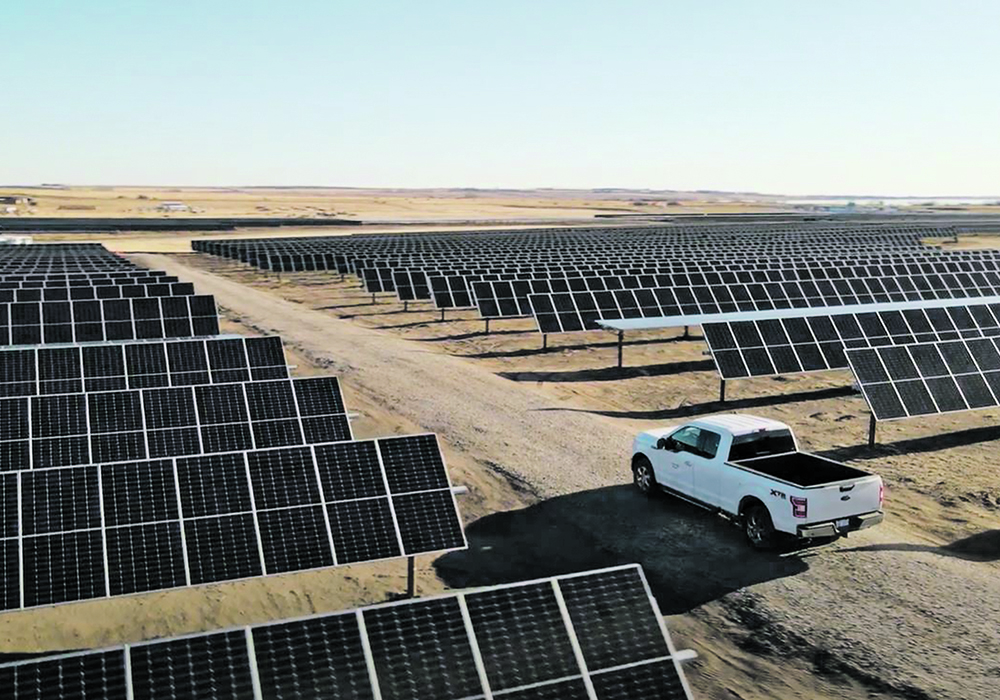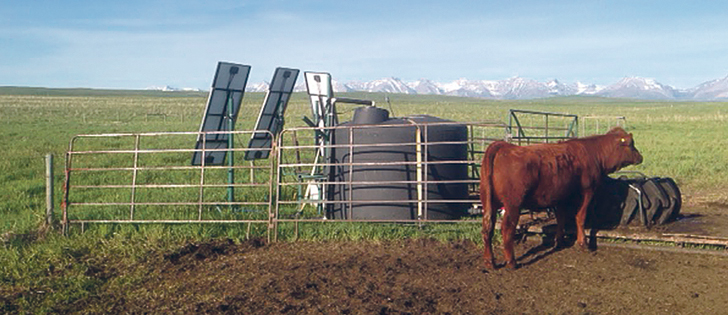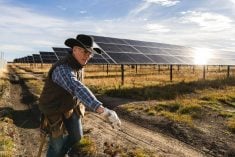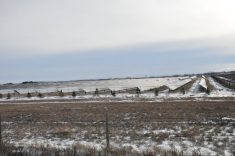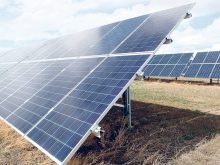Company will pay a local ranch to graze sheep for at least the next three years starting with groups of 50 to 100 head
A solar project in Alberta plans to pay a nearby producer to graze sheep on its land in what is being seen as an example of the benefits farmers can enjoy under such developments.
“I think it’s going to provide a really great opportunity for farmers and just opens the doors to work with these solar companies by providing a service,” said Janna Greir, co-owner of the Whispering Cedars Ranch.
Sheep from the ranch will be used at the Strathmore Solar project to control grass on the 320-acre site, said Brad Cochrane, manager of Solar Canada at Capital Power Corp.
Read Also

Beef cattle more prone to trace mineral deficiencies
The trace mineral status of our cows and calves is a significant challenge for western Canadian producers and veterinarians.
“I know … that primarily we’re trying to keep it low to prevent maintenance issues or fire hazard to the site and equipment, so the sheep really work well where they can graze the site and it’ll keep it so that we’re able to operate the site safely.”
As the first solar development in Canada by the Edmonton-based firm, the project contains 109,174 solar panels on what it described as industrial land leased from the Town of Strathmore, east of Calgary. The project, which was slated to cost up to $55 million, recently started providing 40.5 megawatts of electricity under a 25-year power purchase agreement with Telus Corp.
Greir said Whispering Cedars Ranch will be paid to graze sheep at the site for at least the next three years starting with groups of 50 to 100 animals. Depending on moisture and grass growth, between 400 and 600 head could eventually be involved, with the sheep rotated throughout the site using multi-paddock grazing techniques, she added.
Large parcels of grazing land in the Strathmore area are hard to come by, especially for first-generation farmers like Greir and her husband, Ryan.
“And so, I mean the idea is that the solar panels are there, but it still remains usable for agriculture, essentially, because we can still get in there and graze our sheep…,” said Greir.
Sheep are ideal because their smaller size and relative lack of curiosity means they won’t damage the equipment, she said.
“I mean cattle, obviously, they’re big. They like to itch and rub on things — solar companies probably don’t like that — and goats like to climb on things and chew wires, but essentially, sheep are just the perfect type.”
Greir described the Strathmore Solar site as grassland that was a pasture for cattle until it was sold to the town. Portions of the land that were disturbed during construction of the solar project have been re-seeded, she said.
“Capital Power was awesome to work with, and they were open to feeding suggestions and recommendations… obviously, the nutrition of our animals is important to us, so we wanted to make sure there was a good feed base that went in there.”
The use of rural farmland for solar projects has been criticized by some conservationists and rural municipalities in Alberta. Such initiatives should first be encouraged for former industrial sites or the roofs of urban buildings, said then-executive director Ian Urquhart of the Alberta Wilderness Association in an earlier interview.
However, Cochrane said Capital Power hasn’t “really seen very much (of that issue) with our company … and when we have the sheep on site, we’re still using it for agricultural purposes, so to me, that’s a good way of combining the two practices. And I think that’s really the path that we’ll take on all of our projects because it does make the most sense sustainably and financially for us.”
A second solar project by the company is slated to go into operation in December on agricultural land leased from farmers, he said. The $119-million development is located about 12 kilometres north of Enchant, Alta.
It will provide 75 megawatts, making it almost twice the size of the Strathmore project, said Cochrane. Alberta has refined the process for such developments to proceed, he added.
“And there’s a clear path because there’s a lot of projects going on. We also have very good sunshine in southern Alberta, so I think it’s a good opportunity here.”
Although grazing at solar projects is something of a new topic among Canadian farmers, the practice has been much further developed in the United States, said Greir, pointing to the American Solar Grazing Association. “And we’ve got some friends of ours that do some custom solar grazing out in eastern Ontario there, and we’ve been able to team up with them a little bit just to see how they manage things, how they do it.”


